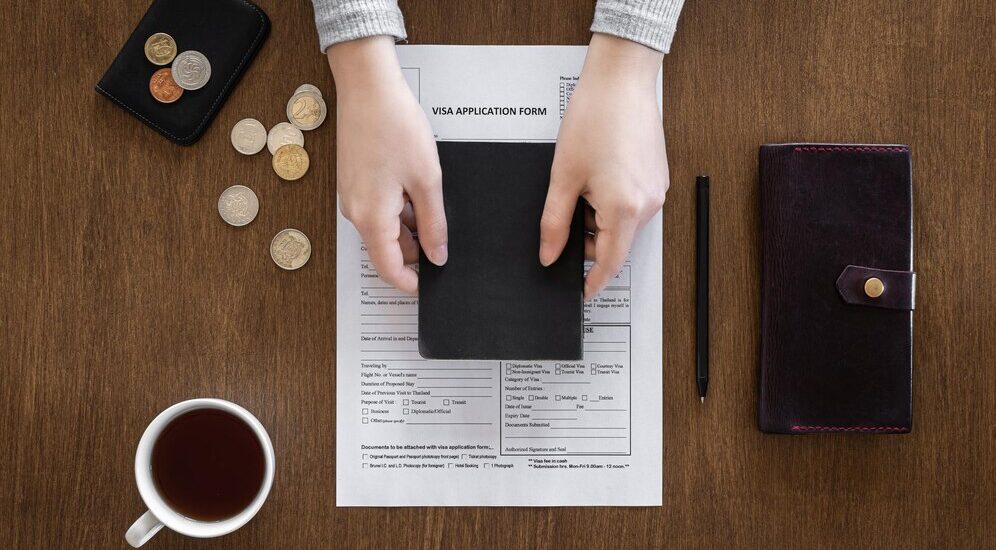A USCIS Waiver Petition is an essential legal tool for individuals seeking to overcome certain grounds of inadmissibility or other barriers to obtaining a visa, adjustment of status, or lawful permanent residency in the United States. These petitions provide an opportunity to request forgiveness for specific immigration violations or circumstances that would otherwise prevent an individual from entering or remaining in the U.S. For many applicants, filing a USCIS Waiver Petition is a crucial step in obtaining a visa or green card when faced with significant legal hurdles.
As an immigration lawyer at SJ Law Experts in Islamabad, I am dedicated to helping clients navigate the complexities of USCIS waiver petitions. This article will provide an overview of the waiver petition process, the types of waivers available, and how SJ Law Experts can assist clients in successfully managing the process.
What is a USCIS Waiver Petition?
A formal request made to the U.S. Citizenship and Immigration Services (USCIS) asking for forgiveness for a specific ground of inadmissibility or another issue that could prevent an individual from obtaining a visa, green card, or other immigration benefits. There are various grounds of inadmissibility under U.S. immigration law, such as unlawful presence, criminal convictions, health-related issues, or immigration fraud, and a waiver petition can be used to ask USCIS to excuse these violations under certain circumstances.
The waiver process allows individuals who would otherwise be ineligible for immigration benefits to present their case for why they should be allowed to enter or remain in the U.S., despite their inadmissibility. Importantly, USCIS waivers are not automatic; applicants must present a compelling case and demonstrate eligibility based on their specific situation.
Types of USCIS Waiver Petitions
There are several types of waiver petitions available, depending on the nature of the inadmissibility or issue at hand. Below are some of the most common types:
- Waiver for Unlawful Presence (I-601 Waiver): Refers to a situation where an individual remains in the U.S. beyond the period authorized by immigration law, and the Form I-601, Application for Waiver of Grounds of Inadmissibility, allows applicants to request a waiver for unlawful presence.
- Waiver for Criminal Grounds (I-601A Waiver): Individuals who have been convicted of certain crimes may be deemed inadmissible to the U.S. However, a waiver for criminal grounds can be filed under specific circumstances. Also, Form I-601A, Application for Provisional Unlawful Presence Waiver, is typically used to request a waiver for unlawful presence while remaining in the U.S. Applicants must show that they would suffer significant hardship if their waiver is not granted.
- Waiver for Fraud or Misrepresentation (I-601 Waiver): Individuals who have committed fraud or misrepresentation on an immigration application may be deemed inadmissible to the U.S. Also, Form I-601 is used to request a waiver of inadmissibility based on fraud or misrepresentation.
- Waiver for Health-Related Grounds (I-601 Waiver): Health-related grounds of inadmissibility include communicable diseases or mental health conditions that could pose a threat to public safety, and a waiver can be requested by filing Form I-601, with appropriate medical documentation to demonstrate that the applicant no longer poses a threat.
The Procedure for Filing a USCIS Waiver Petition
Filing a USCIS Waiver Petition involves several key steps that must be carefully followed to ensure that the petition is successful. Below is an overview of the typical procedure:
- Determine Eligibility: Depends on the nature of the inadmissibility and the type of waiver being requested.
- Supporting Documentation: A crucial part of the waiver petition, this may include evidence of family ties, hardship to U.S. citizen relatives, medical records, proof of rehabilitation (for criminal grounds), and other relevant documentation that strengthens the case for granting a waiver.
- Complete the Waiver Petition Form: Depending on the type of waiver, the applicant must complete the relevant form, such as Form I-601, Form I-601A, or Form I-212. It is essential to ensure that all information is accurate, as mistakes or incomplete applications can lead to delays or denials.
- Submit the Petition: Once the waiver petition form is completed, along with the necessary supporting documents and filing fees, it should be submitted to the appropriate USCIS address based on the waiver type.
- Receive the Decision: If the waiver petition is approved, the applicant can proceed with the visa or green card process. If the waiver petition is denied, the applicant may have the option to appeal the decision or file a new petition if additional evidence becomes available.
How SJ Law Experts Can Assist
A USCIS Waiver Petition is a vital tool for individuals seeking to overcome immigration barriers and achieve their goals of permanent residency or reentry into the United States. The process can be complex, but with the right legal support, individuals can improve their chances of success. SJ Law Experts offers professional legal assistance to help navigate the waiver process, ensuring that all requirements are met and that the best possible case is presented to USCIS. Contact us today to discuss your situation and take the next steps toward overcoming inadmissibility.
SJ Law Experts | Website: www.SJLawExperts.com | Email: SJLawExperts@gmail.com | Contact: +92 335 411 2288





